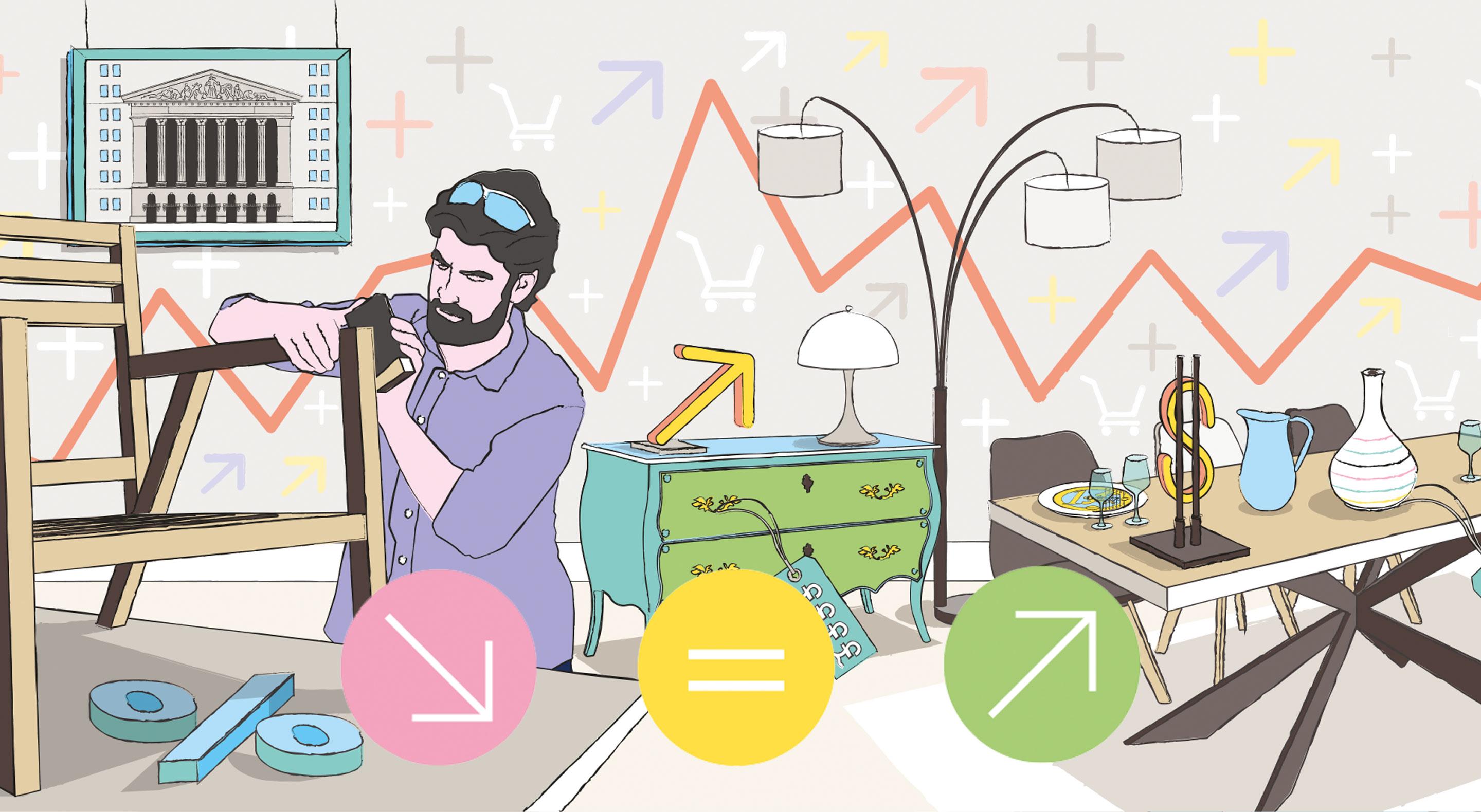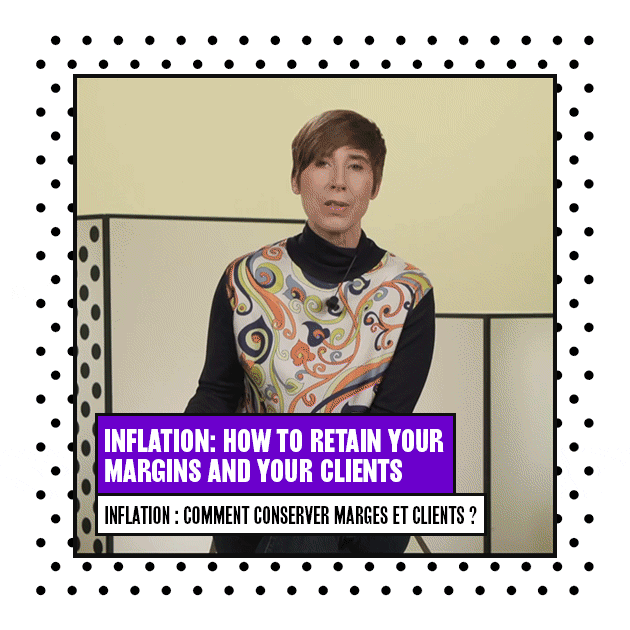Global inflation: how is the industry reacting?
Published on 28 February 2022

Maison&Objet Barometer #3. Price increases are at the heart of concerns for key stakeholders (brands, specifiers and retailers) who responded to the Maison&Objet barometer in February 2022. Beyond the broad consensus around this issue, answers are emerging.
For its barometer, Maison&Objet surveys key industry stakeholders three times a year about major market indicators or areas of current interest. Data are based on the results of an online survey conducted from January 31-February 10, 2022 of 820 Brands, Retailers or Specifiers.

Everything is increasing
19% higher: such is the increase in costs estimated by key stakeholders surveyed for this 3rd edition of the barometer, focused on global inflation and its business repercussions for brands, specifiers and retailers. And rightly so: 64% of them state that they are being strongly impacted by runaway freight transport costs. “The cost of shipping (and containers themselves) is the single largest driver of our margin challenges”, stresses an American product designer. And 54% of brands and specifiers state that they have been significantly impacted by the increase in raw-material prices. In the top-three materials essential to manufacturing, whose prices are skyrocketing, wood is in first place, followed by metals and textiles. But the list is endless, as is diverse range of products that are presented or desired: cushioning and foam, animal horn, metals, stones, sandstone, enamel, cardboard, varnish, lacquer, clay, gold, adhesives…It’s turning into a lasting situation.
“We work exclusively with independent artisans who are currently on a razor’s edge due to these constant cost increases and raw-material shortages…
…particularly in solid woods, oak and walnut, which are being sent in large quantities to the Chinese market“, laments the manager of another established French brand. Eventually, it’s also the quality of products or services that could be at stake.
The repercussions are being felt throughout the industry, regardless of company size, and are raising questions for stakeholders about their mode of operation and supply. “Due to problems, our suppliers are constantly increasing prices and delivery times”, notes the CEO of a French brand who is also dreading delivery delays and possible obstacles to the launch of new collections. Although prices are increasing, “client overall budgets are not increasing,” notes a Brazilian architect, so clients are inclined to spend less on finishing and 'dressing' elements of projects which is a pity for them - and for us as designers as it is becoming more challenging to achieve a quality finished look to maintain our high reputation”.
This cost evolution, which is obviously being felt all the way down to the price of finished products, is affecting specifiers, and, in particular, retailers (boutiques, chain stores, e-commerce businesses, etc.), 62% of whom have stated that are feeling strongly impacted by this.
Higher costs, lower margins
Faced with these increases, everyone is looking for strategies to soften their financial impact on business, both B-to-B and B-to-C and mitigate their influence on product or service prices. These initiatives may include promotional offers, as is the case for this Greek brand that is developing “sales of ready made sets to which we can offer a discount in order for the price increase on individual products to be limited “. More generally, these cost increases can influence the choice of supplier, as well as negotiations with them. It’s a matter of “ordering larger quantities to obtain a discount“ or, on the contrary, of “working with small firms or platforms that offer greater flexibility” than suppliers who require significant minimum orders. To reduce transport costs, others are seeking to “fill containers as much as possible” or plan on placing grouped orders.
Despite solutions put in place to minimize the effects of inflation, 59% of stakeholders have increased their prices over the past 4 months, and 66% plan to do so in the next 4 months…without forgetting the impact on their margins: 58% of stakeholders have reduce them over the past 4 months, and 41% plan to do so over the next 4 months. The owner of a boutique in the southeast of France has thus chosen not to pass on “transport costs implemented by some suppliers“, and a London-based brand recognizes, on their end, that “By holding off increases, it is possible to gain customers at lesser margins though this is only a temporary advantage”.
Optimizing and reorganizing
Faced with increasing prices and shrinking margins, many stakeholders are engaged in a thought process about their overall organization and business operations. Product and material sourcing are being relocalized. “We’re noticing strong demand for products made in Europe. Right now, 50% of our production is based in Europe”, notes a Belgian wholesaler, an approach that resonates with the needs that consumers have clearly expressed. “Clients are looking at the provenance of products and now favor Made in France and in Europe“, notes the manager of a boutique in France.
This optimization can also take the form of range streamlining by manufacturers and of changing suppliers, on the retail side. Since 31% of brands have been feeling a major impact from increased packaging and handling costs tied to shortages and from the ever-higher costs of wood byproducts, recycling has now become an option. “We recycle all the packing materials from our suppliers for use in the packages we send to our clients. Only the boxes are new; we no longer purchase any packaging nor packing materials“, explains a French e-commerce specialist.
Given these challenges, after a generally dynamic 2021, according to the replies of those surveyed, sales are leveling off. Over the past 4 months, 40% of stakeholders have maintained their sales figures, and 29% have seen them increase. And over the next 4 months, prospects are encouraging, despite an expected slowdown in business. And though 36% think that the sales outlook will remain positive, others are expressing another possible scenario, where price becomes a crucial factor: meeting the needs of a clientele that is increasingly demanding and expects increasingly sustainable products, yet who are reluctant to accept extra costs or spend more. This presents yet another challenge for the industry.
Discover the infographic, which reflects the major indicators of the Barometer.

MORE IN-DEPTH INVESTIGATIONS:
Inflation: how to retain your margins and your clients
Maison&Objet Academy helps you understand the market and trends and how to make the right choices for your business.
In the face of raw-material and energy price inflation, everyone has their own strategy. Brands, retailers and specifiers have learned to play around with the numbers, but most find themselves forced to pass on price increases, at least partially.
Available by subscription with a 7-day free trial
or by rental 7,49 € excl. VAT
Duration: 35 minutes